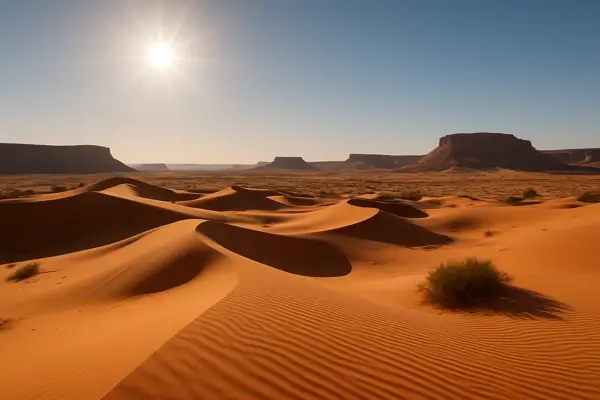
Where the Sahara Meets the Ocean – Mauritania is one of the few countries where the Sahara Desert meets the Atlantic Ocean, creating stunning contrasts of sand dunes and seashores.
Mostly Desert – Around 90% of Mauritania is covered by the Sahara, with vast stretches of sand dunes, rocky plateaus, and isolated oases dominating the landscape.
Rich Islamic Heritage – Mauritania is an Islamic Republic, and Islam plays a central role in society, with nearly the entire population being Sunni Muslim.
Ancient Trading Cities – The historic towns of Chinguetti, Ouadane, Tichitt, and Oualata were key centers of trans-Saharan trade and Islamic scholarship and are now UNESCO World Heritage Sites.
Iron Ore Train – One of the Longest in the World – Mauritania is home to one of the longest and heaviest trains in the world, used to transport iron ore from the mines in Zouérat to the port of Nouadhibou. Adventurous travelers can ride it for free!
The Eye of the Sahara – Also known as the Richat Structure, this massive, circular geological formation in the desert is so large it’s visible from space and often mistaken for an impact crater.
Arabic and French Spoken – Arabic is the official language, but French is also widely used, especially in administration and education.
Fishing and Mining Economy – Mauritania’s economy is based on mineral exports (especially iron ore), fishing, and increasingly, offshore oil and gas exploration.
Traditional Nomadic Culture – Until recent decades, many Mauritanians lived as nomads, herding livestock across the desert a lifestyle still visible in rural communities today.
Slow but Growing Tourism – While still relatively undiscovered, Mauritania offers desert adventures, ancient cities, and unique cultural experiences for intrepid travelers.
